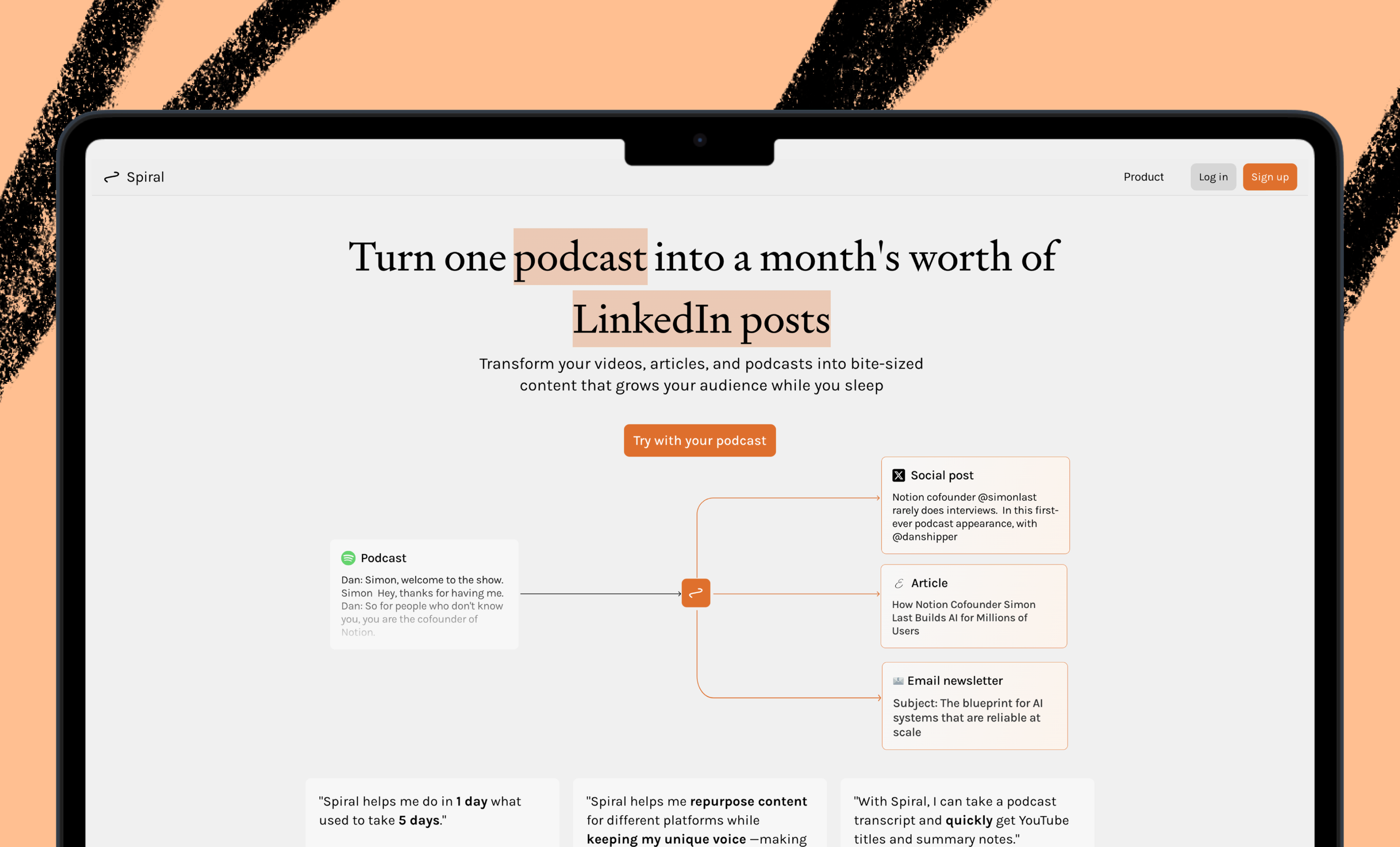
TL;DR: Today we’re releasing a new episode of our podcast AI & I. Dan Shipper goes in depth with Josh Miller and Hursh Agrawal, cofounders of The Browser Company, which created the popular web browser Arc and, more recently, Dia. Watch on X or YouTube, or listen on Spotify or Apple Podcasts. Here’s a link to the episode transcript.
Was this newsletter forwarded to you? Sign up to get it in your inbox.
Sometimes, building the future means grieving what you love—and following a hunch into the unknown.
For Josh Miller and Hursh Agrawal, cofounders of The Browser Company, that meant shifting focus away from Arc, a web browser with millions of users beloved in the tech community. Arc wasn’t broken. But as they explored the potential of AI, it became clear that retrofitting the browser with the technology wasn’t enough. They needed to start over. And that meant walking away from a product they’d spent years obsessing over, all for an idea they couldn’t clearly define yet.
Three weeks ago, they launched Dia in beta. Dia is a browser that makes simple internet tasks easier with AI. Instead of switching between tabs to see which Airbnb is closest to the beach, you can ask Dia to check. Or, rather than jumping between the tabs you have open for research and Google Docs, you can tell Dia to draft a consolidated summary. Dia is, by default, up to speed on everything you have going on—and helps you work with it.
In this episode of AI & I, Dan Shipper sat down with Miller and Agrawal to talk about the “arc” of Arc: what it really means to pivot your company into the future. They get into their indecision as leaders, the very public backlash to their announcement about the pivot, the quiet conviction that kept them going, and how the shift to AI was about meeting the moment before everyone else could see it, not chasing hype.
You can check out their full conversation here:
If you want a quick summary, here are some of the themes they touch on:
The best ideas start with play
The Browser Company’s first foray into AI was not an official, company-wide strategy. It was a project they ran, as Miller puts it, “just for funsies.” In late 2023, when Miller was living in Paris, he hired a contractor to prototype a mobile browser with AI baked into it. The premise was simple: When a user searched for anything in their browser, instead of returning a list of links, the browser would generate a tailor-made webpage that answered your query directly.
Miller didn’t expect much. They’d been hesitant to touch search at all, mostly because of how deeply entrenched incumbents like Google were. Moments before boarding a flight on a Sunday in January of 2024, he launched the mobile browser—called Arc Search—in a tweet. (Miller is quick to point out this is not how products typically get launched at The Browser Company.)
That tweet triggered the strongest reaction they’d ever seen. Users loved the simplicity of a browser that did one novel thing exceptionally well, a principle that became the north star for Dia.
Clarity delayed is momentum lost
Miller admits to something he’s never said publicly before: Deep down, he knew Arc wasn’t the right foundation to build on after the success of Arc Search. But in the moment, he was indecisive.
He and Agrawal tried to hedge their bets. At a company-wide offsite in June of last year, they told the team they’d be building something new—framing it as “Arc 2.0,” not the brand-new product they knew it needed to be. It wasn’t until September that they committed to building Dia as a separate product. “That period is the one that I regret the most in terms of just not calling a spade a spade and just ripping the cord,” Miller says.
Still, he’s careful not to be too hard on their past selves. In mid-2024, pivoting into AI wasn’t obvious, despite what it may have seemed like. The tech was still nascent—hallucinations were a blocker, it was unclear whether it would continue to improve as it scaled, and ideas like giving AI “memory” (which would become central to Dia) wasn’t part of the conversation.
Don’t confuse growth with the goals that drive you
When people ask the pair why they weren’t content with Arc—a product loved by early adopters, with millions of users—Miller’s answer is simple: a profitable company with a smart team and loyal users was never really the goal. Their motivation to start the company was about changing how society interacts with technology. “There are very few pieces of software that your mom and your second cousin and your partner all use,” Miller says—and the browser is one of them. But it only made sense if their browser had mainstream adoption. Their commitment to this vision kept them grounded through the pivot.
When the tools changed, so did what was possible
According to Miller, the core idea behind Dia is that it “gets better with every tab you open” by learning from your behavior, building context, and becoming more useful over time. But this “memory” feature almost didn’t make it into the product. After nine months of trying to build it, the team shelved the capability; the technology just wasn’t there yet. Then, six weeks before launch, Agrawal had a hunch that things had shifted. They revived the project and built out the memory feature, and today, it’s one of the features both the company and its users are most excited about. Miller says this was enabled because the “fundamental building blocks changed” and the team had an “understanding of how to wield them.”
Here’s a link to the episode transcript.
You can check out the episode on X, Spotify, Apple Podcasts, or YouTube. Links are below:
- Watch on X
- Watch on YouTube
- Listen on Spotify (make sure to follow to help us rank!)
- Listen on Apple Podcasts
What do you use AI for? Have you found any interesting or surprising use cases? We want to hear from you—and we might even interview you.
Miss an episode? Catch up on Dan’s recent conversations with founding executive editor of Wired Kevin Kelly, star podcaster Dwarkesh Patel, LinkedIn cofounder Reid Hoffman, former a16z Podcast host Steph Smith, economist Tyler Cowen, writer and entrepreneur David Perell, founder and newsletter operator Ben Tossell, and others, and learn how they use AI to think, create, and relate.
If you’re enjoying the podcast, here are a few things I recommend:
- Subscribe to Every
- Follow Dan on X
- Subscribe to Every’s YouTube channel
Rhea Purohit is a contributing writer for Every focused on research-driven storytelling in tech. You can follow her on X at @RheaPurohit1 and on LinkedIn, and Every on X at @every and on LinkedIn.
We build AI tools for readers like you. Automate repeat writing with Spiral. Organize files automatically with Sparkle. Deliver yourself from email with Cora.
We also do AI training, adoption, and innovation for companies. Work with us to bring AI into your organization.
Get paid for sharing Every with your friends. Join our referral program.
Ideas and Apps to
Thrive in the AI Age
The essential toolkit for those shaping the future
"This might be the best value you
can get from an AI subscription."
- Jay S.
Join 100,000+ leaders, builders, and innovators

Email address
Already have an account? Sign in
What is included in a subscription?
Daily insights from AI pioneers + early access to powerful AI tools









Comments
Don't have an account? Sign up!